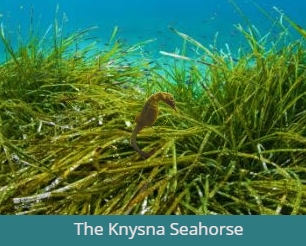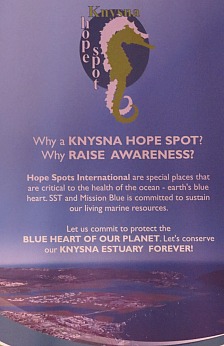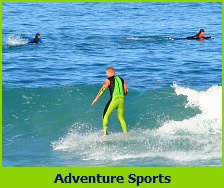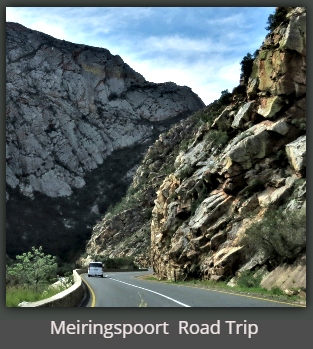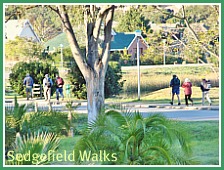Mark Dixon - Top Notch Local Trail Guide
who's Passionate about Nature
In many respects Mark Dixon is an unconventional man. He has a quiet determination about him, a sense of “being on purpose” and his story reveals someone who’s prepared to count the cost, weigh the odds and to take the risks required to live a life that’s meaningful to him. He knows his own self-worth and is comfortable in his own skin.
 Mark Dixon
Mark DixonMark finished university in 1994 having achieved a BSc in Agriculture and an MSc in Aquaculture. He was about to depart for Australia when his parents invited him to come and work their smallholding at Rondevlei, outside Sedgefield, where they had retired.
After considering a number of options, Mark started off planting 5 varieties of pincushions, and a number of proteas. He also grew climbing tomatoes and bell peppers in tunnels. He exported the pincushions and proteas to flower markets in Holland and sold the vegetables to local suppliers.
 Greater Double-collared Sunbird on Pincushion Protea
Greater Double-collared Sunbird on Pincushion ProteaMark Dixon had excelled at swimming at school and had won many races but missed out on International competition in the Apartheid era.
One day on a trip to Knysna, he added another string to his bow when his attention was drawn to an archery competition in progress on Sedgefield School field.
On a whim he turned his vehicle around and went off to find out about archery. Within a short space of time he decided to try it out and was being mentored by two locals Derek Kershaw and Nicholas Beech.
 Mark engaging in archery again briefly in 2014
Mark engaging in archery again briefly in 2014With very basic equipment and after only shooting for 6 weeks, Mark went off to Port Elizabeth to participate in his first competition, a Provincial Championship where he won the Best Novice Award. (It might have been because he was the only entrant in that category, he said.)
However, Mark must have had a natural aptitude for the sport for 16 months later he was awarded his Springbok Colours and was off to the Africa Championships being held in Kenya under the auspices of FITA (The Federation of International Target Archery).
This was followed by
the Canadian Nationals in Edmonton, Alberta and 10 days later he participated
in the World Championships in Victoria, British Colombia.
Mark Dixon-Observer in Antarctic Waters
This sport was interrupted however, when Mark’s life, unexpectedly, took another direction. It was a dream of his to go to Antarctica so in 1998 he responded to an advert to be an observer on a fishing vessel bound for Marion Island.
 Icy Antarctic Waters
Icy Antarctic WatersThe CCAMLR – The Convention on the Conservation of Antarctic Marine Living Resources comprised an international group of signatories that had prescribed protocols for ships that operated in Antarctic waters. They needed observers!
Barely a week before the departure date, Mark received a letter saying he could possibly be one of two observers who were tasked with ensuring that the fishing vessel complied with the CCAMLR regulations.
At the last minute, just two days before departure, he was given the go-ahead and had to scramble to assemble a suitable wardrobe for such a trip and fly to Cape Town.
 Strait of Magellan
Strait of MagellanThere he boarded a 48 meter Japanese fishing vessel, with Japanese officers and a motley Indonesian crew that included a few South Africans, to sail for icy southern waters.
His job was to monitor waste disposal as nothing was allowed to be thrown overboard, to collect biological data, record marine sightings, and see that the tori lines complied so that seabird fatalities were minimalised.
He remembers that the vessel had a diesel stove and because the nozzles weren’t properly cleaned, all the food tasted of diesel.
He lost nearly 10 kgs on that trip!
On his return Mark had a 3 day turn-around and then was off on a similar observation voyage again, this time to the environs of Prince Edward Island.
 The Natural Beauty of New Zealand
The Natural Beauty of New ZealandThis still wasn’t the real Antarctica Mark wanted to see so when an opportunity arose to fly to New Zealand and monitor NZ fishing vessels he never hesitated. He had 10 days until the vessel left port so taking advantage of the free time he went off and climbed Mt Cook on the South Island.
He continued to be an observer on New Zealand ships and also American/Spanish fishing boats that sailed from Punta Arenas in the Strait of Magellan until 2004.
He was able to visit Easter Island in the Valparaiso Region of south-eastern Chile, site of hundreds of extant monumental statues and home of the Rapa Nui indigenous people who have experienced a tumultuous history right up to modern times.
With unforgettable experiences recorded and memorised by the time his contract ended, Mark spent some time exploring and hiking around New Zealand. Before he returned to South Africa in 2004, he had hiked all but 2 trails on the South Island.
Mark Dixon - Return to South Africa 2004
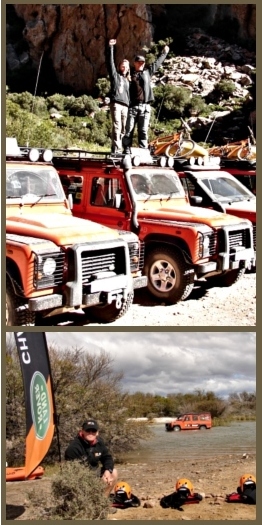 The Land Rover G4 Spirit of Adventure Competition
The Land Rover G4 Spirit of Adventure CompetitionMark Dixon was ready now for a new venture and so his Garden Route Trail experience began. He found there was a local demand for day walks and birding which he was able to fulfill, making them both fun and interesting.
He also assisted the Collins brothers, John and Mark with their business, Magnetic South that encompassed various events such as the Waterfront Rush – an obstacle course set up on or above water and the Land Rover G4 Spirit of Adventure. There he met his future wife-to-be, Amanda, when she was a competitor, one of a team of four, that made it through to the finals at Sun City in 2007. She worked for the Collins in their Magnetic South Offices.
By 2009 the couple had decided to get married and they tied the knot at the Dixon’s farm on 25 April at a very unusual wedding. While the couple were doing their wedding photos the guests were all participating in a treasure hunt to find out where they would be sitting at the reception.
Because they were still hunting when Mark and Amanda arrived back, the newly-weds had to wait a while for their guests to appear so they could make their own official entrance again! By then strangers had become friends and the party was well on its way to a truly fabulous celebration.
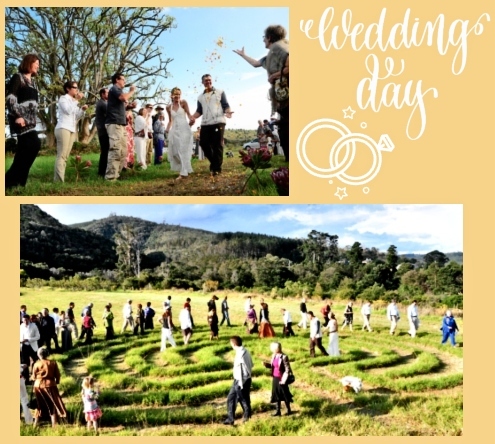
Mark Dixon had wanted to go to Madagascar on more than one occasion and had it planned for their honeymoon, telling Amanda she must just make sure she had a passport and a bikini. But as on a previous occasion, Mark’s plans went awry because as before, a coup was in progress, and the honeymoon destination had to be changed at the last minute.
However, the new plan was still pretty amazing. They started out at the luxurious Thonga Beach Lodge at Lake Sibaya, and then spent time in Mkuzi, Ndumu, Swaziland, Kruger (Punda Maria) Reserves ending off at friends in a private game reserve near Brits.
When Amanda returned to Sedgefield, it was to live on the Dixon’s farm in a house, she said, “was still under construction”.
The walls were up and the roof was on and everything else was pretty rudimentary.

Determined to live off-the-grid, they had a tank that could hold 7000 litres of harvested rainwater, solar panels with a 750 watt inverter, that with a fridge and other electrical goods to supply, didn’t allow Amanda to use a hair-dryer (grr…) or vacuum cleaner. Gas supplied the geyser and stove.
The only shower was an outdoor one (which they both now love) and initially, was gravity fed but later, after they obtained a 1500 watt inverter, a bilge pump provided a more stable flow.
Their water storage has risen to 25000 litres
as they have invested in 4x 5000 litre and 2x 2500 litre water tanks harvesting
rainwater from the roof of their house and a shed.
 Mark Dixon guiding on his Garden Route Trail business
Mark Dixon guiding on his Garden Route Trail businessMark Dixon - Bird Monitoring Project
In 2011, a completely different opportunity was offered by Consultants, Albert Froneman and Chris Van Rooyen (who are also specialist bird and wild-life photographers), to monitor specific areas of the Eastern Cape that were to be zoned for wind farms.
Mark and Amanda did many of these surveys together to assess whether the erection of more than 27 wind farms in the Western Cape region were in suitable places giving consideration to 32 priority species of birds. The areas in question included the Roggeveld, Stilbaai, Mossel Bay, Uniondale, Cookhouse, Bedford, Molteno, Jeffreys Bay, Elliot, and Grahamstown.
Unfortunately the necessary buffer zones for these huge turbines were modeled on European and North American bird behaviours which were migratory and transient whereas in South Africa the equivalent species were territorial and resident. This was only realised when a number of wind farms had already been erected and the damage was done.
 Mark and Amanda on the Bird Monitoring Project
Mark and Amanda on the Bird Monitoring ProjectMark said there was an area where Verrauxs Eagles (an iconic species) soared high on air currents and when they focused on prey and came down for the kill they never saw the lethal blades spinning at 200kms an hour. To see a decapitated corpse lying on the ground it was as if the head had been cut off with a samurai sword.
Smaller flocks of birds didn’t see the danger either and were pulled into the mast by barometric pressure and thrown against it so that the ground that became littered with small lifeless bodies.
Two wind farms were stopped because of EIA preconstruction studies. The field research required that the relevant data be accurate and meticulously recorded in a scientific manner. Researchers had to be on site by sunrise and stay there until sunset. This sometimes meant being up an hour or more, earlier, to travel to where they needed to be and only return home an hour or more after sunset.
It meant keen observation and awareness of birds’ movements throughout the day, their behaviour and flight patterns. Mark and Amanda had to complete 4 iterations for each season of the year. Each iteration lasted between 6-16 days, averaging around 8 days.
The couple eventually were working for 5 consultants. This work lasted until February 2017 when thanks to Mr Zuma, alternative energy programs were dropped. The consultants are all now somewhere else, no longer in Africa.
Landmark Foundation
"Shepherding for Biodiversity" Project
 Degraded karoo farmland on right hand-side of road and regenerating on left hand-side.
Degraded karoo farmland on right hand-side of road and regenerating on left hand-side.In November 2017, Mark and Amanda started consulting for Landmark Foundation who had created a project in the Beaufort West area called “Shepherding for Biodiversity” on 4 farms that collectively cover 20,000 ha and use shepherds to watch over 400 sheep and 300 cattle.
South African farms are the most fenced areas in the world as a result of a fencing subsidy that came into play in the 1960’s.
These fences enabled a farmer to easily shoot what he wanted, without checking on his sheep or their environment. South Africa is the only country that doesn’t shepherd its livestock.
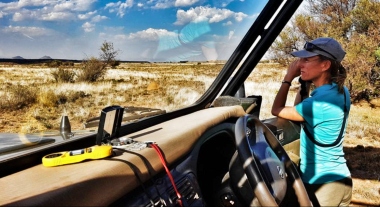 On the job at a shepherding Kraal Site at a Beauford West farm
On the job at a shepherding Kraal Site at a Beauford West farmWhen livestock is corralled in the evening, a farmer can check on the condition of each animal; a shepherd that has been with the flock or herd all day can report if one has been off colour, has an abscess, ophthalmia, cysts, has hurt itself; can say if the grazing is depleted or water troughs need replenishing or repairing.
Much of the Karoo is now a degraded environment, because exposed to vast areas, flocks can choose what they want to eat. This means that they eat their preferences until they are destroyed beyond recovery and the unpalatable vegetation flourishes and biodiversity is diminished.
So a program has been introduced as mentioned above to revitalise exhausted and depleted farm environments. This is an experiment to show how everything can flourish when land, livestock, wildlife and people are managed in a different way and with a different mindset.
 Shepherds releasing their sheep from their night kraal
Shepherds releasing their sheep from their night kraalShepherds take the flock out of the night kraal to water and then into a paddock of limited size. The high density of the flock forces each animal to eat what’s in front of it so a mixture of vegetation is eaten, (otherwise sheep are notoriously fussy) hoof action breaks up the hard top layer of soil and micro-organisms from defecation fertilise and moisturise it.
The same place is not grazed again for a year. Gradually ants, spiders, insects, birds, small animals interact in this environment and diversity brings harmony and restoration. Mark mentioned that livestock unattended can inadvertently face hardships and challenges that lead to death.
By the time the farmer finds a corpse in a poor state of degradation he sees the foot prints of a jackal or caracal around it, but can he say whether it was live animal that was predated or a sick or dead animal that was scavenged.
 Jackals killed monthly on one farm - photo Landmark Foundation
Jackals killed monthly on one farm - photo Landmark FoundationOn farms that have shepherds, predators like leopard and caracal co-exist with the livestock. The presence of shepherds keeps them at bay especially when the sheep are corralled at night. Jackals are territorial so the presence of a pair reduces the number in that territory and larger predators help to keep them under control.
It is fact that 1000’s of jackals are being killed each year in the Western Cape alone, because there are no apex predators to control their numbers. Inhumane gin traps are still allowed that are indiscriminate in their action, wrecking their destruction on hundreds of innocent victims that are beneficial to the environment and their loss only impoverishes an already degraded environment even more.
So Mark and Amanda have once again been asked to conduct avifaunal studies. This time it encompasses all species including crows and ravens to see if their study will reveal indicator species, signifying by their presence, the condition of a particular environment and what appears or disappears when the health of this test area improves. This will require ongoing on-the-spot, in-the-field monitoring and documenting. I think it will be fascinating!
Loving What You Do and Who You Do It With
 A Perfect Pair - Work, Play, Love, Companionship, Fun and Adventure.
A Perfect Pair - Work, Play, Love, Companionship, Fun and Adventure.Part-time consultation work suits Mark and Amanda as it allows them the freedom to live life on their terms.
They have other irons in the fire so this loosely constructed lifestyle suits them, as a couple, perfectly.
Nevertheless, they live their lives on purpose, making conscious choices. They work hard and play hard while enjoying a quality of life that is second to none.
There are moments of stress and uncertainty (that’s an unavoidable part of being human) but they go with the flow, trust in the goodness that life essentially is, and to do their best whatever comes their way.
In this sense, they are role models in our community.
Theirs’ is a rich experience full to the brim in every sense of the word.
It's diverse, interesting, fun, challenging, adventurous and enjoyable.
I call it an authentic life!
 This couples Motto "You have to love what you do and who you do it with!"
This couples Motto "You have to love what you do and who you do it with!"References: Thanks to Mark Dixon for photos, use of Facebook photos and all the information on this page.

Related Links


Because of his qualifications and love for his subject, Mark Dixon of Garden Route Trail is probably the best local guide in the Garden Route area for his in-depth knowledge of our local fauna and flora. He is also superb at communicating what he knows and notices. A walk with Mark makes hours fly by like minutes because his acute powers of observation will point out a hundred things you will miss on a walk by yourself.
From the beach through the lakes to the forest, a trail with Mark Dixon as your guide will be totally absorbing and fascinating, providing you with an unforgettably memorable experience of the magnificent Garden Route outdoors.



